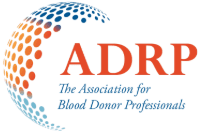Staff perspectives on barriers and enablers to implementing alternative source plasma eligibility criteria for gay, bisexual, and other men who have sex with men
Authors
Gisell Castillo, Elisabeth Vesnaver, Emily Gibson, Terrie Butler-Foster, Mindy Goldman, Nolan E. Hill, Andrew Rosser, Don Lapierre, Kyle A. Rubini, Richard MacDonagh, Glenndl Miguel, Amelia Palumbo, Paul MacPherson, Taylor Randall, William Osbourne-Sorrell, Sheila F. O’Brien, William Bridel, Joanne Otis, Mark Greaves, Taim Bilal Al-Bakri, Marco Reid, Maximilian Labrecque, Marc Germain, Shane Orvis, Andrew T. Clapperton, Dana Devine, Justin Presseau
Abstract
Background
Canadian Blood Services introduced new eligibility criteria that allows some sexually active gay, bisexual, and other men who have sex with men (gbMSM) to donate source plasma, marking a significant change from time-based deferral criteria. We aimed to identify potential barriers and enablers to implementing the new criteria from the perspective of donor center staff.
Study Design and Methods
We conducted Theoretical Domains Framework-informed interviews with staff from two source plasma donation centers in Canada.
Results
We completed 28 interviews between June 2020 and April 2021. Three themes representing eight domains captured key tensions. Valuing inclusive eligibility criteria: staff support inclusive criteria; many were concerned the new criteria remained discriminatory. Investing in positive donor experiences: staff wished to foster positive donor experiences; however, they worried gbMSM donors would express anger and disappointment regarding the new criteria, staff would experience unease over using stigmatizing criteria and convey nonverbal cues of discomfort, and recurring plasma donors may behave inappropriately. Supporting education, training, and transparency of eligibility criteria: participants believed providing in-person training (i.e., to explain criteria rationale, address discomfort, practice responding to donor questions) and ensuring donors and the public were well-informed of the upcoming changes would improve implementation.
Discussion
Participant views emphasize the importance of supporting staff through training and transparent communication to optimize the delivery of world-class equitable care for a new cohort of donors who have previously been excluded from plasma donation. Findings inform which staff supports to consider to improve implementation as policies continue to shift internationally.
May 12, 2022
Related Resources
Engaging blood donors as advocates Social media preferences and associations with marketing
Background: Various critical medical procedures would become impossible without blood donations—saving lives in emergencies, surgeries, and chronic conditions like thalassemia. Therefore, it seems crucial to enhance donor recruitment and ensure…
Rethinking the role of older donors in a sustainable blood supply
INTRODUCTION Many countries, particularly high human development index countries, are facing the challenge of an aging population.1 For Blood Collection Agencies (BCAs) in these countries, an aging population poses two…


